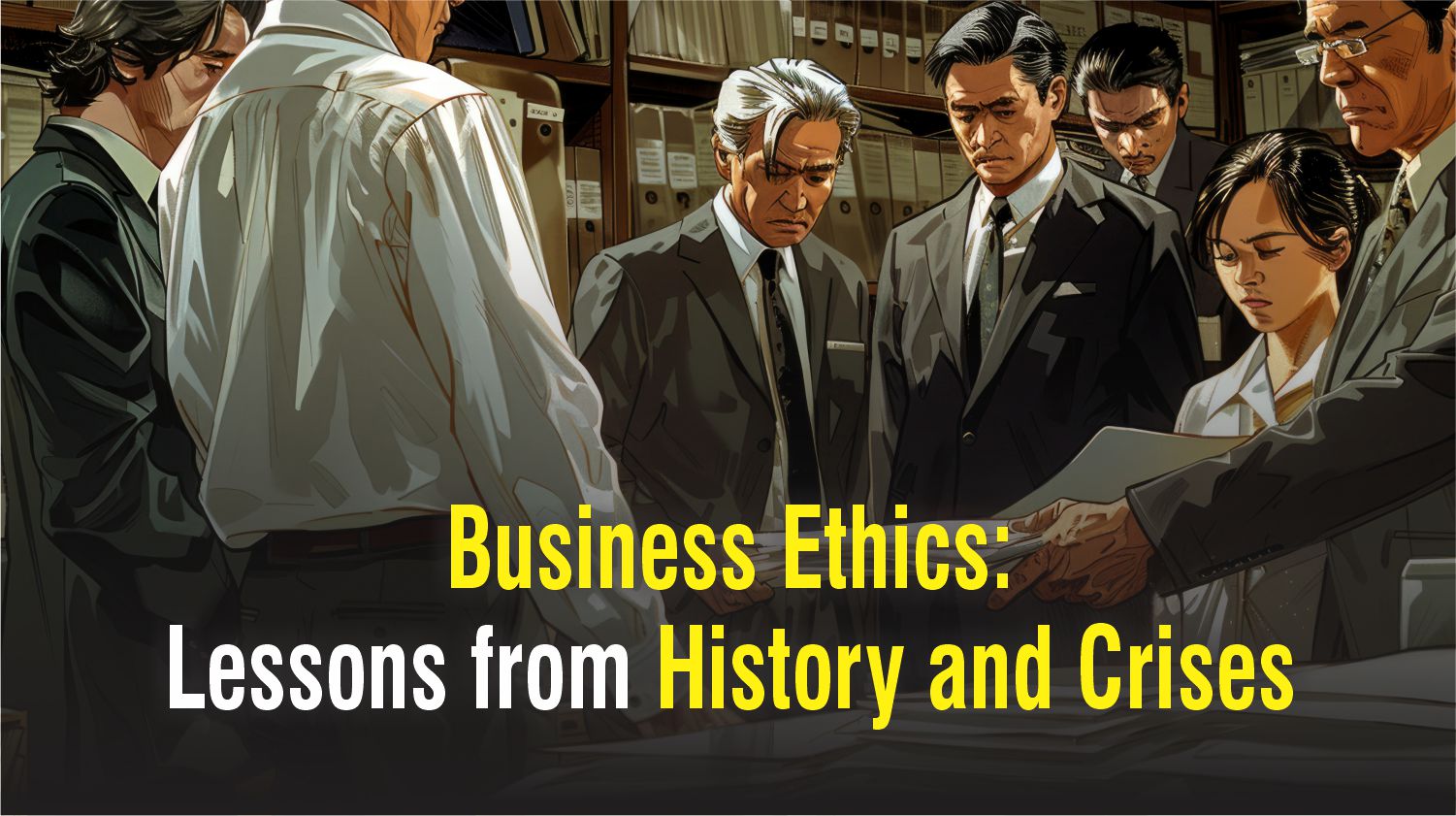Blogs on Business and Entrepreneurship

Power & Influence: The Cornerstones of Effective Leadership
on Jul 14 2025
Leadership isn’t just about vision, strategy, or charisma—at its core, leadership is about getting people to move in a common direction. And to make that happen, every leader must master two foundational forces: power and influence.
Whether you're a team manager, an executive, or an emerging leader, understanding how to responsibly use power and skillfully apply influence can be the difference between leading a compliant team and inspiring a committed one.
What is Power in Leadership?
In the leadership context, power refers to a leader’s ability to affect the behavior, decisions, or actions of others. It’s not just about authority or titles—it’s about how effectively a leader can shape the environment and guide outcomes.
There are two broad categories of power:
Position Power: Derived from your formal role or authority (e.g., legitimate power, reward power, coercive power).
Personal Power: Gained from individual qualities like expertise, likability, and trustworthiness (e.g., expert power, referent power).
💡 Leaders who rely solely on positional power often find short-term compliance. But for long-term commitment, personal power often proves more effective.
The Four Outcomes of Power-
Before diving deeper into the different types of power, it’s essential to understand what power actually produces. The way a leader exercises power—and the influence tactics they use—can result in four different outcomes:
These outcomes depend on several factors: the leader’s credibility, the situation, the consequences of disobedience, and how aligned the followers feel with the mission.
💡 A smart leader isn’t just focused on getting things done—they’re focused on how people feel while doing it.
Influence in Leadership: Turning Power into Action
Now that we’ve explored the types of power, let’s shift our focus to how leaders use their power in real-world interactions. This is where influence comes in.
Influence is the application of power to shape opinions, encourage action, and shift behaviors. Whether trying to inspire a team, gain buy-in, or initiate change, leaders must employ specific influence tactics.
Based on the work of leadership scholar Gary Yukl (1989), there are nine core influence tactics leaders can use—often in combination—to drive results and build commitment.
A leader’s ability to influence effectively can determine whether a team moves forward in alignment—or not at all.
In times of change, uncertainty, or even just routine operations, leaders must motivate individuals to act in the best interest of the group or organization. That requires authenticity, emotional intelligence, and the strategic use of influence tactics.
💡 Important note: Not every tactic fits every scenario. Influence that feels forced or insincere is unlikely to be effective. Leaders should focus on the approaches that align with their personality, context, and team dynamics.
Effective Leadership Using Empowerment
Some leaders fear that sharing power will weaken their authority—but the truth is quite the opposite. The most effective and respected leaders understand that empowering others enhances their own influence, builds trust, and creates stronger, more motivated teams.
Empowerment means intentionally giving others a voice in decisions, the autonomy to make choices, and the tools to take initiative. When followers are empowered, they feel trusted, valued, and capable.
Empowerment doesn't mean stepping away entirely. Great leaders continue to:
Monitor progress
Offer support when needed
Step in during high-stakes situations
Clearly define the boundaries of decision-making authority
Final Thoughts: The Power to Influence, the Influence to Empower
Leadership without power is ineffective. Power without influence is unsustainable. And influence without empowerment is incomplete.
Leadership Essentials You Always Wanted to Know dives deeper into these concepts—exploring types of power, real-world influence strategies, and how leaders at all levels can foster empowerment.
Whether you're leading a team of two or an organization of thousands, power and influence aren’t about control—they’re about connection and commitment.
📘 Want to Learn More?
Explore these concepts and more in Leadership Essentials You Always Wanted To Know—your go-to guide for mastering leadership fundamentals, written for emerging leaders, managers, and professionals aiming to elevate their impact.

Strategic Management for Small Businesses: A Practical Guide to Thinking Long-Term
on Apr 18 2025
This blog recaps the insights we captured in our recent podcast episode featuring Prof. Vishal Gupta (University of Alabama) an expert in strategic management. We explored how small businesses can think long-term, build resilience, and apply strategic thinking in practical, real-world ways.
Strategic management is often associated with large corporations, boardroom meetings, and long-term forecasting. However, its principles are just as crucial if not more for small businesses. Entrepreneurs operating with limited resources, tighter margins, and rapidly changing markets need clear, forward-thinking strategies to survive and grow.
So what exactly does strategic management look like for a small business owner? Let’s break it down.
1. Understanding the Core of Strategy
At its core, strategic management is about making decisions today that will position your business for success tomorrow. It requires integrating knowledge from the past, understanding the current situation, and planning for an uncertain future. While this might sound overwhelming, it begins with a simple mindset: step back, reflect, and plan.
2. Balancing the Past, Present, and Future
A common theme in strategic thinking is the ability to move seamlessly between timeframes, Small business owners need to:
Reflect on the past to understand what has worked and what hasn't.
Be grounded in the present, managing immediate concerns and opportunities.
Anticipate the future, asking critical “what if” questions to prepare for change.
This ability to be mindful of different timelines is what gives a business its agility. If you only focus on the present, you risk being reactive. If you dwell on the past, you may become resistant to innovation. And if you look only to the future, you may overlook the urgent needs of your customers today. Strategic management finds a thoughtful balance.
3. The Power of Anticipation
One of the most critical aspects of strategy is the ability to anticipate. This doesn't mean having a crystal ball it means developing a habit of scanning the environment and asking:
What trends are emerging in our industry?
How are customer expectations changing?
What technologies could disrupt our business?
Even five or ten years ago, many people wouldn’t have predicted the rise of video-based social media platforms or the global shift toward remote work. Yet businesses that adapted quickly were the ones that thrived.
Strategic anticipation comes from being curious and informed. Small business owners should make time to read industry news, attend webinars, talk to customers, and watch what competitors are doing. It’s not about copying others, it's about spotting patterns and preparing accordingly.
4. Strategic Thinking is Not Just for Experts
A major misconception is that strategy is reserved for MBAs or consultants. In reality, small business owners are already making strategic decisions whether they know it or not. Every time you choose to enter a new market, hire a new employee, or launch a new product, you're making strategic moves.
The key is to be intentional. Take the time to write down your goals. Review your assumptions. Ask your team what they think. Build reflection and foresight into your decision-making process.
Strategic thinking can be simple. Start with questions like:
What are our biggest strengths right now?
What are we not doing that we should be?
Where do we want to be in 12 months—and how will we get there?
5. Strategy as a Habit
Perhaps the most useful insight is that strategy is not an event—it’s a habit. It’s not something you do once a year at a retreat. It’s a continuous process of adjusting, learning, and evolving. Think of it as a cycle:
Assess your current position.
Plan a course of action based on available insights.
Act on the plan while remaining flexible.
Review what worked and what didn’t.
This cycle doesn’t need to be formal. It can be as simple as a monthly check-in with your team or a quarterly review of your goals.
6. Common Pitfalls to Avoid
Even with the best intentions, many small businesses struggle to maintain a strategic mindset. Some common traps include:
Short-term fixation: Only focusing on immediate revenue without long-term growth.
Overplanning: Spending too much time creating a perfect plan, and not enough time executing.
Ignoring feedback: Not listening to employees, customers, or data.
Avoiding these pitfalls requires humility and discipline. Small businesses thrive when they remain flexible, listen actively, and adapt quickly to feedback.
7. Strategy in Action
A practical example of strategy at work might be a local bookstore deciding to offer online orders and virtual author events. This move is strategic because it:
Adapts to customer behavior (online shopping),
Leverages strengths (curated inventory and community),
Plans for sustainability (alternative revenue streams).
The strategy didn’t require expensive consultants or a 50-page plan. It required observation, creativity, and the willingness to test something new.
Final Thoughts
Strategic management isn’t a luxury—it’s a necessity for small businesses operating in a fast-paced, unpredictable world. When small business owners commit to thinking strategically, they build more than just a business. They build a roadmap for resilience, growth, and long-term impact.
Start small. Reflect often. Think long-term. That’s the strategic advantage.
Checkout the full Podcast Episode for more insights

Business Ethics: Lessons from History and Crises
on Apr 02 2025
Historically, ethics in business have gained traction during distinct periods. The discussion surrounding business ethics becomes especially significant whenever there is war, political turmoil, economic crisis, or a massive corporate scandal. Based on these events, case studies are written, life histories of business leaders are examined, motives are analyzed, viewpoints are evaluated, laws are revised, and the fundamental ways to define “rights” and “wrongs” are debated. Let’s delve into the diverse perspectives on the evolution of business ethics and examine how crises have influenced it.
Perspectives on the Evolution of Business Ethics
From an evolutionary perspective, one could go back to Aristotle’s Nicomachean Ethics, written almost 2000 years ago, to understand how to make ethical decisions. Aristotle explained ethics as virtues required for a good living. These virtues are not mere theoretical ideas for contemplation but practical, day-to-day habits that enable one to live a fulfilling life.
From another perspective, Kautilya, in the Indian context, wrote the Arthashastra in the fourth century B.C. The text explains the significance of ethics through value-based leadership derived from the ideals of truthfulness, righteousness, gratefulness, and reliability. Ethics in business can also be viewed from the lens of Karl Marx’s contributions, who questioned capitalism. In his words, capitalism “sows the seeds of its own destruction” by delineating the masses and exploiting the working class.
While such references have been critical to developing the present-day narrative on business ethics, teaching ethics in business schools is relatively new. It started five decades ago in American business schools, where many business education ideas and practices originated and spread globally. However, the relatively short period of five decades is insufficient to yield significant evolutionary outcomes. Thus, the business ethics discipline still faces skepticism, and diverse schools of thought regarding its utility exist.
Renowned author Peter Drucker, the Father of Modern Management, wrote a paper in the year 1980 titled - “What is Business Ethics?” Drucker discussed the rapid pace at which business ethics became a trendy or an “in subject,” and explored the reasons behind its introduction as a standalone course in business schools and universities. He strongly criticized business ethics as “no ethics at all” and considered the value of the subject no more than “society gossip.” The criticism began when business schools introduced ethics courses, and it has remained so to date.
The Impact of Corporate Scandals and the Pandemic on Business Ethics
The voices of those advocating business ethics gained significance as and when corporate frauds and scandals were discovered by stakeholders. For instance, the Enron fraud came to light in 2001 stirring a major debate on the need to inculcate ethics in business managers, and leading to the enactment of the Sarbanes Oxley Act in the subsequent year. A similar situation occurred during events like the financial crisis of 2008.
In 2020, the global Covid-19 pandemic affected businesses as one of the fiercest crises in recent history. Extremely high-speed economies, businesses, and lifestyles came to a standstill. People worldwide experienced grief and loss. Differences between the haves and have-nots were exacerbated, and the marginalized classes became more vulnerable.
For businesses specifically, it was a daunting challenge as companies worldwide faced lockdowns, slowing down of the economy, employee welfare expectations, corporate social responsibility obligations, government mandates, and so on. However, it also served as a litmus test of their endurance.
During the pandemic, while some organizations crumbled, shut operations, or resorted to layoffs, others contributed to relief projects by producing sanitizers, masks, and even ventilators, apart from going the extra mile to care for employees and their families. The factors that distinguish the latter from the former could be the nature of the business or its leadership. These factors are usually acknowledged, but one lesser-known potential factor is business ethics. During the pandemic, organizations faced a critical choice between kindness and survival. They were required to strike a balance between the two and find ways to align ethics with sound business practices.
From Virtue to Value: Why Business Ethics is Here to Stay
In order to explain the business value in internalizing ethics in the company, Nobel Laureate economist Amartya Sen wrote a paper in 1993 that vividly described how denying business ethics is not only harmful but also impractical. In his words, business ethics are “crucially important in economic organizations.” Ethics make business sense because there is no other way for a business to survive in the long run.
According to biologists, humans are naturally ethical. They have discovered the occurrence of mirror neurons in humans that create empathy for others, naturally. So, if individuals and organizations led by individuals are unethical, it is a conscious choice and not a default option, because otherwise, there will be chaos.
Business ethics by default create multiple benefits, including customer trust, market reputation, and support from suppliers and other stakeholders including the government, civil society, and the media. This is why some organizations, despite the challenges, continue to be driven by business ethics. Ultimately, to them, it makes solid business sense. No matter the challenges, such organizations thrive in the long run, and goodness eventually prevails!
For those looking to get an in-depth understanding of such topics, read Business Ethics Essentials You Always Wanted to Know. It is an easy-to-understand guide to all the essential business ethics concepts, including complex ethical frameworks, tests for ethical decision-making, and future trends in business ethics. This book is a part of Vibrant Publishers’ Self-Learning Management Series and is suitable for entrepreneurs, leaders, and professionals.
This blog is written using excerpts from “Business Ethics Essentials You Always Wanted to Know” by Dr. Ritika Mahajan.
Business Ethics Essentials You Always Wanted to Know
Find out more about the book here:
Link to the book: Business Ethics Essentials You Always Wanted to KnowAuthor: Dr. Ritika Mahajan Press Release: Vibrant Publishers Unveils “Business Ethics Essentials”– Your Guide to Ethical Business Success
Also Read: What’s Ethical and What’s Not? A Guide to Ethical TheoriesEthics in Market Research The Social And Ethical Side Of Marketing

